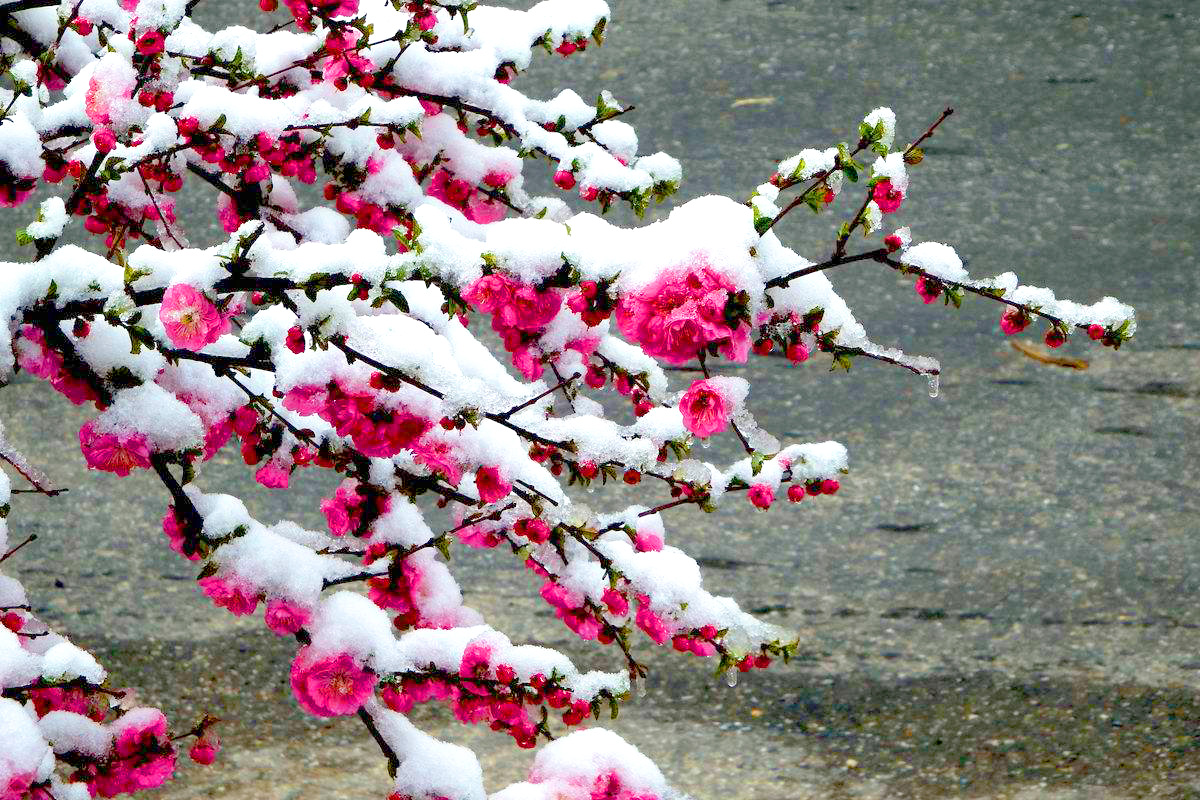Mei and the Chinese spirit

Plum blossoms covered with snow is an image of perseverance in Chinese culture.
“Following the good example of the plum blossom, I would rather leave the world with my integrity than the image of a good appearance,” President Xi Jinping ended his speech when presenting the new CPC central leadership to the press on Oct 25, 2017.
These sentences were quoted from a poem chanting verses related to mei, or plum blossoms, by Wang Mian (1287-1359) in the Yuan Dynasty. Probably one of the most eulogized flowers in Chinese poetry and painting, the plum blossom conveys profound cultural connotations in China.
Mei blooms in the piercingly cold winter. Wang Mian’s verse was written on his painting Black Ink Mei, which was painted with only black ink. Wang praised the ink mei for it preferred to leave the world with its fragrance than the reputation of a good appearance. Wang used mei as a metaphor to say that he would uphold virtuous principles, especially in difficult days, and never give up lofty ideals.
Mei culture is unique and shows distinct Chinese characteristics. A symbol of purity and nobility as well as a messenger of an exuberant spring, mei has been the theme of poetic chants and artistic paintings for thousands of years in China.
Mei, together with lan (orchid), zhu (bamboo) and ju (chrysanthemum), is considered one of the four “gentlemen” flowers. It is also considered one of the three friends one could associate with in winter, together with song (pine trees) and zhu (bamboo).
Mei first came into the lives of Chinese people as food. In a bronze tripod from the Shang Dynasty (c.1600-c.1046) in the Yin Ruins at Anyang, Henan Province, archaeologists discovered the cores of mei fruits, indicating that mei fruit were eaten by Chinese people 3,000 years ago.
Mei was used as a Chinese cultural symbol in the earliest example of Chinese literature—the Book of Songs. The song April says “On the mountain are fine trees,—Chestnut trees and plum trees. Who has destroyed these trees? Who knows the reason why?” Mei is at the root of the Chinese national spirit.
The cultivation of mei as an ornamental plant started in the Han Dynasty (202-220 BCE). The red plum trees that are commonly seen today were cultivated in the Tang Dynasty (618-907). Great poets in the Tang Dynasty, including Li Bai, Du Fu, Bai Juyi, Han Yu and Li Shangyin, all wrote poems about mei.
Fan Chengda, a poet in Southern Song Dynasty (1127-1279) wrote the world’s first Guide to Mei, which describes 12 varieties of mei.
As the ornamental cultivation of mei prospered, the aesthetic culture surrounding mei also entered a prosperous stage in the Song Dynasty (960-1279), when the virtue of mei gradually became a part of the Chinese national spirit.
Out of more than 290,000 poems and lyrics of songs in the Song Dynasty, there are about 6,000 that were dedicated to chanting the virtues of mei.
Blooming against chilly frost and snow and giving out delicate fragrance silently, mei also herald the coming spring. Generations of Chinese chanted these precious virtues of mei.
As one of the flowers with the most unique Chinese characteristics, mei has been the subject of literary and artistic works for thousands of years. President Xi quoted poems that praise the virtues of mei on several occasions. The verses he quoted from Wang’s poem indicate that the Chinese communists will remain true to their original aspiration and keep moving forward, serving only the interests of the people.
Qian Xiaoming is a member of the Chinese Painting Institute.

 PRINT
PRINT CLOSE
CLOSE